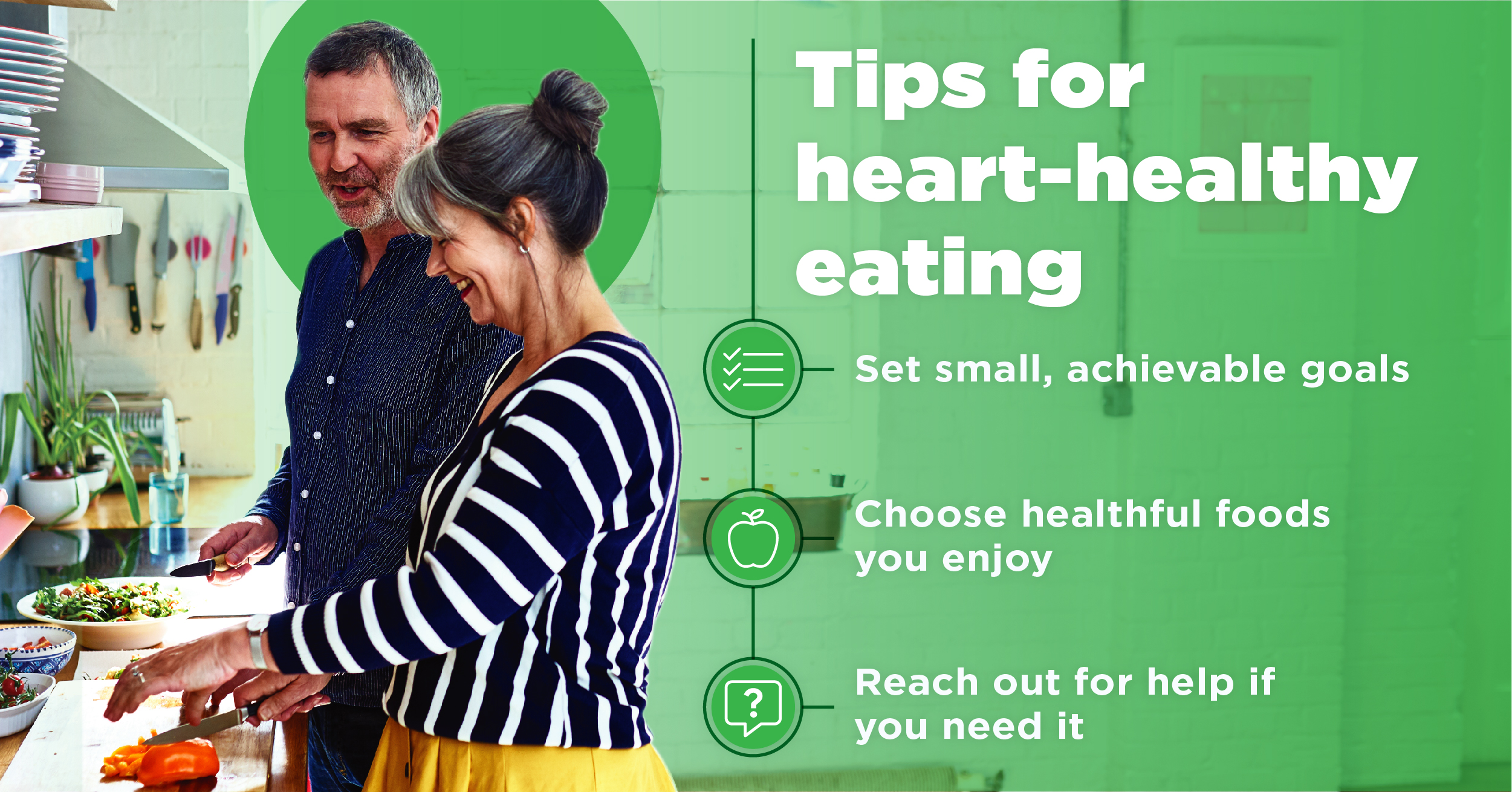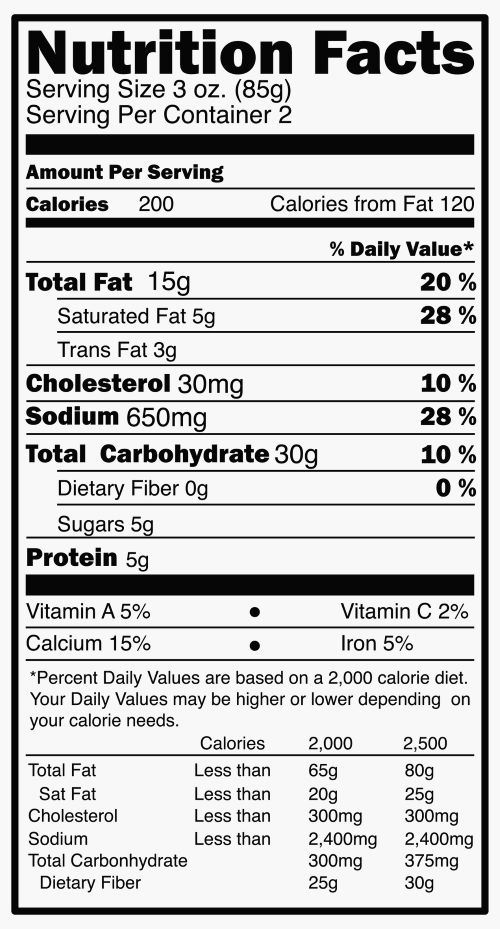A registered dietitian offers strategies and shortcuts to help you get your meals and snacks on track.

Eating is – or should be – one of the most consistent pleasures in life. Like so much else, however, it can get complicated. We’re busy, so we grab something fast. We’re stressed, so we grab something sweet or salty. We’re cooking for a family, so we gravitate to meals geared to the pickiest eater.
Fortunately, Karin Pennington, a Cigna health coach who works one-on-one with employees, knows strategies and shortcuts that can help you get your meals and snacks on track. The first thing to remember is that small changes made over time are easier to swallow – so to speak – and can be more long-lasting than going all-out from the start.That strategy works when you’re trying to add healthful foods such as fruits and vegetables to your diet, and it works when you’re trying to limit foods such as snacks.
"Setting small, achievable goals is really the key." Karin Pennington, Registered Dietitian, Cigna
What is heart-healthy eating?
The American Heart Association considers heart-healthy eating to be a well-balanced intake rich in a variety of fruits, vegetables, whole grains, and low-fat meats and dairy. This means that one eating plan doesn’t necessarily fit everyone – instead, it provides the flexibility to choose foods that are right for you and your family. It also allows for occasional foods that have added saturated and trans fats, sugars, and sodium.

Why is heart-healthy eating important?
Heart disease is the No. 1 killer in the United States. Adopting a heart-healthy lifestyle, which includes healthy eating, decreases the chance of a heart attack or stroke.
What’s the best way to get started?
Begin with the end in mind. What does your ideal healthy-eating plate look like? Next, decide when you want to get there – by next month, by January, etc. Set small, weekly, achievable goals to reach that end goal.
It’s better to make progress toward what you want and be able to maintain it than to make too many changes at once that ultimately are unsustainable. As you are thinking of your goals, also think about the support you may need along the way – it might be the help of a family member or friend, it might be your doctor, or it might be day-to-day needs like access to finances, transportation, or knowing how to prepare the foods.
What should – and shouldn’t – I eat?
Sometimes it’s helpful to have specific numbers so you can compare your daily diet to health recommendations. The DASH eating plan, a top-rated meal plan originally designed to lower blood pressure through eating whole foods, offers the following daily and weekly recommendations:
- 4 to 5 servings of vegetables daily
- 4 to 5 servings of fruits daily
- 7 to 8 servings of whole grains daily
- 2 or 3 servings of low-fat dairy foods daily
- No more than 2 servings of animal-based proteins daily
- No more than 5 servings of sweets weekly
- At least 4 servings of nuts, seeds, and beans weekly
How do I know what a serving is?
That’s a great question. Many times, what people consider an average portion of food is so large it counts as multiple servings. The DASH plan defines a serving as:
- ½ cup sliced vegetables or 1 cup raw, leafy green vegetables
- 1 small piece fresh fruit or ½ cup fresh, frozen, or canned sliced fruit
- 1 slice whole-grain bread, 1 ounce dry, whole-grain cereal, or ½ cup rice, pasta, or cereal
- 1 cup milk or yogurt or 1½ ounces low-fat cheese
- 1 ounce cooked meat, chicken, or fish or 1 egg
- 1 tablespoon sugar, jelly, or jam
- ⅓ cup nuts, 2 tablespoons nut butter or seeds, or ½ cup cooked beans

With prepared foods, check the nutrition labels for details on serving size. Many times, you can see the data for one serving and for the entire container. A pint of ice cream is a good example – if you eat the whole thing, the nutrition data is right there, so you don’t have to do the math. And if you need a primer or a refresher on how to read the labels, the U.S. Food & Drug Administration (FDA) has an online tutorial.
Some of those servings amounts seem like a lot for a day, and others – like sweets – are not much at all.
Remember to start where you are, then work toward your goal. With sweets, for example, you might get to a point where two sweets a day is the best you can do. That’s okay – maybe you’ve gone from eating five sweets a day to two. Also, remember that each day is another opportunity to choose what you eat, and when.
Can I eat healthy at a restaurant?
Yes. When you’re going to a restaurant or buying a prepared meal, decide what vegetable you’d like to start with, then build the meal around that. And don’t be afraid to ask questions at restaurants. You’re the consumer, and you want to know what you’re putting into your body. It’s reasonable to ask your server questions like, how is this prepared? Do you add extra salt? Do you add butter? We might be uncomfortable asking those questions, but they are not unreasonable.
And if the portions are large, you can consider splitting one or bringing the rest home for another meal.
Do you have other tips for changing eating habits?
Having a conversation with your doctor can be motivating. Finding a friend or family member to be an accountability partner can help too. As a health coach, I get a lot of feedback that people know what they need to be doing, but the extra accountability of a partner is a driving force in changing their behaviors and developing healthy habits.
How can I help my children/teens eat better?
In addition to encouraging fruits and vegetables for snacks, let them choose fruits and vegetables at the grocery store. Consider including your children in meal preparation, and ask them for input on at least a few family meals each week. Have them clear and set the table, which exposes kids to new foods – and research tells us that we have to be exposed to a new food 10 to 15 times before we will even try it.
Adolescents and older teens also can wash and put away the dishes and prepare their own lunches, which provides even more exposure to the foods you’d like them to try and eat.
The American Heart Association has great resources, including Dietary Recommendations for Healthy Children, which provides a benchmark on the number of servings of each food recommended for long-term heart health.
It seems like nutrition recommendations keep changing. How do I know what’s the best way to eat?
We’ve been eating since the beginning of time, but the science of how nutrients work in our bodies, and what we need based on certain health conditions, is relatively new. That means there’s not the wealth of published, credible studies that we see in other areas. That’s why we see changes in nutrition guidelines and recommendations.
Two great sites to keep up with the latest information are fda.gov/food and the U.S. Department of Agriculture’s MyPlate.gov.

Get News, Insights, and Inspiration Right to Your Inbox
Subscribe to our monthly newsletter today.
